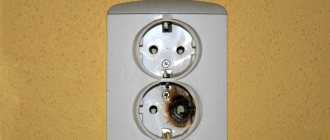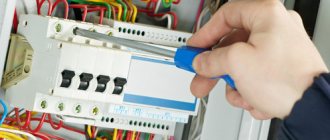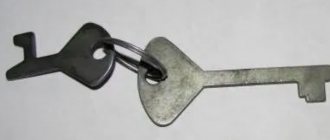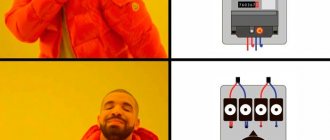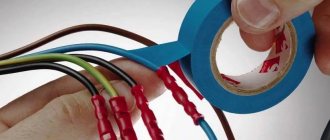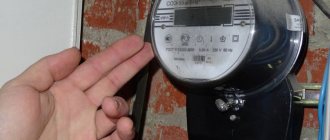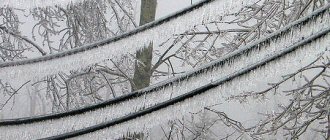In 2022, there were 439,100 fires in Russia, in which 8,262 people died. One of the most fire-dangerous periods is the May holidays, when people go out into nature and to the countryside. Barbecues, picnics, and cleaning of summer cottages traditionally lead to fires. It is no coincidence that this year a special fire safety regime will be introduced in the Moscow region from May 1. Residents will be prohibited from lighting open fires (less than 50 meters from buildings, 30 meters from deciduous trees, 100 meters from coniferous trees), burning dry grass, garbage, and barbecuing. Failure to comply with these requirements will result in a fine (from 2 to 4 thousand rubles).
Question and answer What not to do at the dacha. Infographics
The enemy is within
However, careless handling of fire is not the only cause of fires. According to statistics, 30% of fires occur due to an electrical short circuit, malfunction of electrical equipment and violations of its operation. In particular, the weak point of any home is old, worn-out and simply poor-quality wiring, in which a short circuit can occur at any time.
“Wiring is the heart of the house,” explains head of TDM ELECTRIC Vadim Morozov . — The safety of your home largely depends on its quality. Flickering light bulbs, the smell of melting wires, or electrical sockets may indicate that something is not right with the wiring. If these dangerous signals are ignored for a long time, a fire may occur at any moment.”
Article on the topic
From fire to flood. What is the shelf life of wiring and pipes in an apartment?
Causes of electrical fires
A short circuit fire is caused by a number of factors. Let's look at some of them in more detail.
Violation of insulation and contact
Damage occurs as a result of oxidation of contact surfaces, caused by overheating. An increase in metal temperature causes it to expand and touch the cables. As a result, contact of two polarities occurs, causing a short circuit.
Errors in connection and cross-section of wires
The cause of a short circuit in the apartment may be cable contacts. The interaction of copper and aluminum wires causes diffusion. As a result, gradual heating to high temperatures occurs.
Wire size is also important. Any cable is designed for a certain load. Exceeding the permissible values at the joints causes heating, which can cause further ignition. Below is a table of correspondence between cable core thickness and maximum load.
Incorrect gasket
Cables located in the house, electrical room or on the roof of the room must be correctly connected and laid. Relevant for hidden wiring, where it is impossible to notice the moment of fire.
When installing a cable into a wall, you need to minimize sharp edges, as they can damage it during installation.
Questionable and faulty electrical appliances
The devices used must be of proper quality and have additional safety measures. For example, some kettle manufacturers increase the insulation of the wires, which reduces the risk of a short circuit.
Do not use devices with damaged plugs or cables.
Malfunction of protection devices
To minimize short circuits, a machine is installed at the entrance to the apartment. It will automatically turn off the power during a power surge, which will prevent a fire.
Damage to plugs and sockets
When electrical appliances are connected to the network, contacts interact, which become loose over time, leading to excessive heating. Such problems are characterized by crackling and sparking. The plug overheats, the socket melts, the contacts stick to each other, and a fire occurs.
Damaged socket
What to do if a wiring fire occurs?
Fire safety expert Alexey Lomov says:
1. If you know what caused the fire, disconnect the device from the network or turn off the power to the apartment (house) through the electrical panel.
2. A small fire can be extinguished by limiting the access of oxygen to the fire (for example, by covering it with a thick cloth) or by generously sprinkling the fire with ordinary baking soda.
3. Do not try to extinguish a fire with water - this may contribute to the spread of fire, besides, water is a conductor of electricity
4. Do not open windows and doors - due to the air flow, the fire may intensify
What happens if you pour water on a burning appliance?
Fire is a fast-spreading disaster that requires swift action when it occurs. But haste and stress often lead to rash and impulsive actions - a person grabs the first container of water he comes across (a vase of flowers, a bottle of drinking water, a mug of tea) and pours it onto the burning electrical wiring. Such an action will instantly lead to the most dire consequences.
From the physics course we know that water (in most cases) is a solution of various salts. These salts are in solution in the form of charged particles - ions. The presence of ions makes water (as well as tea, coffee, and various water-based liquids) an electrolyte - a substance that conducts electric current.
Water entering the combustion zone will cause the following consequences:
- In the short time that the jet connects the hands of the person engaged in extinguishing the fire and the wires exposed by the fire, the current can cause electrical injury that is dangerous to life and health. The risk increases if the container is made of conductive materials (for example, metal), your hands are wet, etc.
- Once inside the device, water will spread through the wires, causing more and more short circuits, which increases the risk of complete failure of the entire system. So, by pouring water on a fire-switched distribution cabinet, an inexperienced firefighter will destroy those devices that have not yet been damaged by the flame.
That is why it is allowed to extinguish with water only those electrical appliances that are reliably known to be de-energized.
If an electrical appliance that caught fire was flooded with water, disconnected from the network only by equipment (switches, circuit breakers, etc.), but not physically disconnected from it, there is a risk of current bypassing through the flooded areas. Then some parts of the device may unexpectedly become energized.
If there are children in the room
In case of a fire, children behave differently than adults - most often they hide from the fire under the bed, in the closet, or climb into a corner. Even if you are sure that the house is safe, try to explain to the kids that in such cases they need to immediately run out of the room and under no circumstances return to it for forgotten things.
How to protect electrical wiring in an apartment from accidental fire? More details
Water and foam.
All types of devices, including foam ones, are used only on a de-energized system. This is how they extinguish fires that are visible and de-energized devices.
Powder.
A class E fire extinguisher is a powder extinguisher and is designed specifically for extinguishing electrical appliances and wiring. The essence of the powder action is that it knocks down the flame and covers the fire site with a layer, isolating it from oxygen. This type is very effective and has proven itself. It should be extinguished from a distance of at least a meter from the fire.
Carbon dioxide.
One of the most effective types of fire extinguishers. The principle of operation is that carbon dioxide sharply reduces the temperature and knocks down the flame. Also, after evaporation, it does not leave any traces; it can be used at a voltage of 10,000 VV. You can extinguish from a distance of at least a meter from the fire.
If there are no fire extinguishers nearby, it is permissible to use sand.
In the event of a fire with live wiring or electrical appliances, a number of requirements must be taken into account:
- It is required to make grounding for all special equipment: foam generators, special vehicles, hoses.
- A safe distance must be maintained.
- Foam devices are prohibited.
- You must be equipped with personal protective equipment.
How to protect yourself from problems
“You can’t save on electrics,” explains Vadim Morozov. — At the same time, only a specialist can distinguish dangerous wiring from safe wiring “by eye”, and it is better to entrust this important work to him.
The main points you need to know before starting repairs:
- In a wooden house, it is better to use cables that match the type of room rather than wires.
- Open wiring is safer than hidden wiring
- The thickness of the section depends on the load. If you do not take this indicator into account, the cable will heat up and the insulation will melt, which will inevitably lead to a fire.
- It is better to choose products from well-known companies (whose markings should be applied along the entire length of the wire). Unlabeled and cheap wires may not be able to handle the increased power.”
Methods for extinguishing burning wiring
A short circuit is a fairly powerful impulse that can destroy the network. It appears when connecting the wires of a circuit, provided that the current does not reach the consumer. Afterwards it heats up and if measures are not taken, a fire occurs. If you see sparks, flames, smoke, and understand that the wiring is on fire, you urgently need to turn off the power to the room. They do this through the shield, but if there is no access to it or it itself is the cause, the current supply is stopped mechanically. This requires a tool that has electrical insulation. It could be the same axe. If it is not possible to extinguish the fire, you need to call the fire brigade immediately.
Similar: Fire cable for fire protection systems
It is forbidden to extinguish burning electrical appliances and anything connected with electricity with water, even sea water. This is due to the fact that water is a conductor and quite powerful; when extinguishing, you can get an electric shock. Water can be used in cases where the network is already de-energized and the wiring needs to be replaced.
In principle, during a power outage, any method of fighting fire will do. But if the network is live, only a class E (powder) fire extinguisher, which specializes in extinguishing fires of this type, is suitable. The maximum threshold for such devices is 900 Volts. If a fire breaks out in a network with a much higher voltage, the first thing you need to do is de-energize the network. Other devices, including foam ones, cannot be used - they will only aggravate the situation.
Bottom line, there are two ways to deal with an electrical fire using a fire extinguisher:
- Powder class E (can be used on any electrical appliances).
- Carbon dioxide, which is capable of operating with voltages up to 1000 V.
But which fire extinguisher to extinguish electrical wiring depends on several factors, including voltage.
Correct use of sockets
But of course it’s better to just not let the outlet catch fire. Indeed, in most cases, we practically set the socket on fire with our own hands by mishandling it. Therefore, we will give just a few simple rules that will allow you to avoid getting into such a “hot” situation.
- We will not advise you not to insert foreign things into the outlet, not to water it, and not to do other completely obvious things. Here are the rules that everyone has probably heard about, but for some reason forgotten.
- First of all, remember that each outlet has its own current rating. This parameter is set based on the power of the contact part of the socket. Typically, sockets are made for a current of 6A, which approximately corresponds to devices with a power of 1.3 kW. There are sockets for 10, 16 and 25A, the price of which is naturally slightly higher. More powerful devices can be connected to them. But their power still should not exceed the rated current of the outlet.
In the photo you can see where to look at the rated current of the outlet
- The socket must be firmly fixed in the seat. There should be no play when pulling the fork. Otherwise, each time the socket is used, the wires will be subject to deformation, which will ultimately lead to their breaking and poor contact.
- Do not insert larger diameter plugs into outlets. This leads to deformation of the contact part of the plug and, as a result, poor contact. This in turn leads to heating.
Remember! The higher the resistance of a conductor, the more heat it generates when current flows. At the same time, the higher the temperature of any conductor, the greater its resistance. It turns out that the more the wire is heated, the less current it can normally pass. Therefore, an overheated wire will certainly burn out during further operation.
If the plug or socket shows burnt marks as in the video, be sure to remove the voltage from it and clean it. Otherwise, it will inevitably lead to fire.
Protection measures
It is much easier to prevent a wiring fire in an apartment than to try to recover from the consequences of a fire. Therefore, to prevent wiring fires, certain safety precautions should be observed:
- At the stage of installation or replacement of electrical wiring, it is necessary to provide a margin for the cable cross-section. This will allow you to increase power if you connect any new device without the risk of fire.
- Ensure that wires are insulated from flammable materials using non-flammable gaskets. For example, on wooden walls it is important to use a special corrugated pipe, textolite strip, asbestos plates and other non-combustible materials. A metal strip can only be used if it is grounded through an RCD, since in the event of a fire in the wiring, potential will transfer to the metal.
- When replacing wiring, you should use a copper cable specifically designed for domestic premises. Despite its high cost compared to aluminum wiring, it is much more reliable. And modern insulating materials do not support combustion, which makes it impossible for such wiring to catch fire.
- Do not connect wires inside walls. Such components cannot be detected until a fire occurs. Therefore, all conductors from the box to the consumer, switch or socket must be solid. And at the connection points they must be connected with factory clamps, avoiding twists.
- If there is a connection between aluminum and copper conductors in the house, such a point should be fixed using a brass sleeve or a special terminal clamp. Even the use of a brass gasket and tightening with a bolt does not provide a 100% guarantee, since the gasket is destroyed and oxidized over time due to the flow of electric current. Figure 2: Wire Connection
- Do not use shields, cabinets or boxes made of flammable materials. Since in the event of a fire in the same electrical panel, the housing itself will support the combustion. Which will lead to the spread of fire to adjacent elements of the building. If metal distribution panels are used, the fire will not spread beyond its boundaries.
- Use short circuit protection both between cable cores and to ground. It is necessary to select an RCD in such a way that it allows you to de-energize the network in the event of a fault in the wiring or devices, when connecting a load that is too large for wiring, and in other emergency situations. Figure 3: Connecting machines
- Refuse to use faulty devices - if you notice damage to the insulation, unusual noise and other signs, take it for repair. The operation of such devices not only threatens their breakdown, but can also lead to a fire in the wiring.
- When repairing equipment or any elements of the electrical network, turn off the power to the room. Since the cause of a fire is often an artificial short circuit made by a careless repairman during work.
- When leaving home, be sure to turn off the power to each device whose operation is not necessary in your absence. Since the cause of a short circuit and further fire in the wiring can be an unloaded device. And if you are away from the apartment for a long time, it is better to turn off the input machine.
It should be noted that the best way to prevent a fire is a fire alarm. Especially for wooden houses or rooms with flammable finishes. Since it will notify about burning wiring even before the critical spread of the flame. Despite the additional costs, this solution will ensure fire safety for your home.
Conclusion
The causes of electrical fires are associated with faulty condition of electrical wiring, electrical equipment, and its improper operation.
To prevent fire, you should repair electrical wiring, sockets, switches, and use only serviceable devices.
It is prohibited to place the equipment near flammable objects, surfaces, or substances. The premises must have primary fire extinguishing means.
This is interesting: The keys of the pass-through switches are in different positions: let’s understand it thoroughly
Hazard Prevention Measures
The first and most effective way is to install special protective devices in the shield. For example, an RCD will help prevent current leakage in the apartment in time, a circuit breaker will help prevent short circuits and overvoltage, and a voltage control relay will prevent the occurrence of two phases in the socket, as well as overvoltage. Please note that you can only use an RCD if you have grounding, as required by the PUE in Chapter 1.7, namely in paragraph 1.7.80.
The next thing you need to take care of is to inspect the electrical wiring at least once a year (or better yet, every six months). This will allow timely detection of poor contact, cable damage or overheating of current-carrying conductors. Here you can also include an assessment of the condition of the old wiring. You need to be aware of when it is better to replace the entire home electrical system. Don't forget about the main signs of an electrical problem - crackling noises, sparking sockets, a burning smell. If any of these signs show themselves, you need to immediately start looking for a breakdown.
And lastly, follow safety precautions during repairs. Before hanging the TV on the wall, determine where the hidden wiring is located so that you don’t accidentally get into it when drilling. We talked about how to find a wire in a wall in the corresponding article. In addition, do not forget that you need to connect aluminum to copper only using special terminal blocks, and electrical installations are only allowed during a complete power outage.
So we looked at possible electrical wiring faults in an apartment and a private house. We hope the article was useful and interesting for you!
Tags: machine, beat, sconce, input, input machine, view, harm, choice, switch, house, , clamp, grounding, sign, insulation, cable, like, , installation, power, voltage, overvoltage, potential, touch, wire, project, laying, start, , work, calculation, relay, repair, socket, row, network, twist, connection, resistance, means, ten, type, current, installation, shield, electricity, electrical panel, effect
